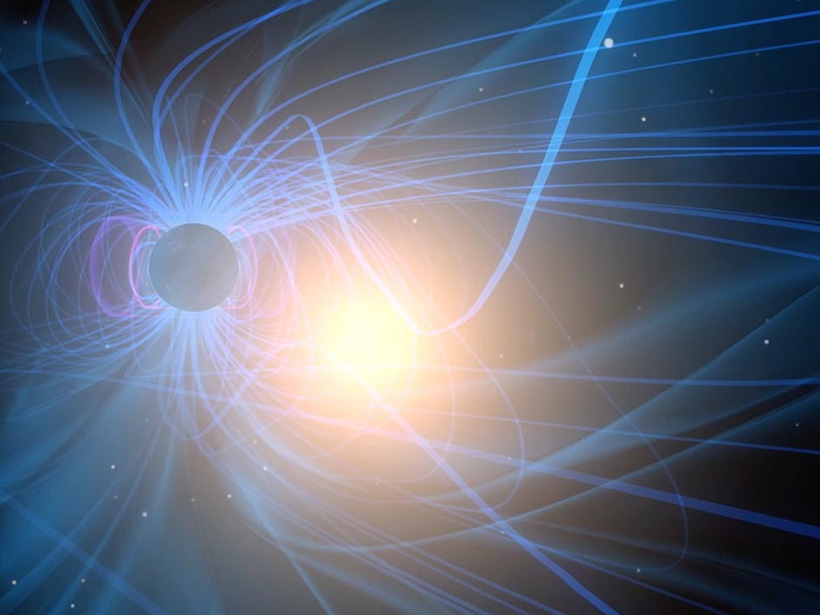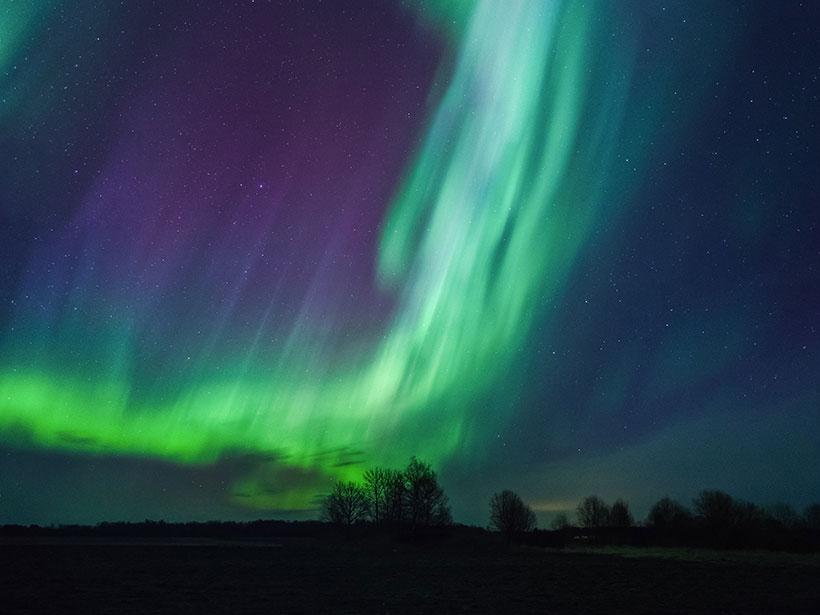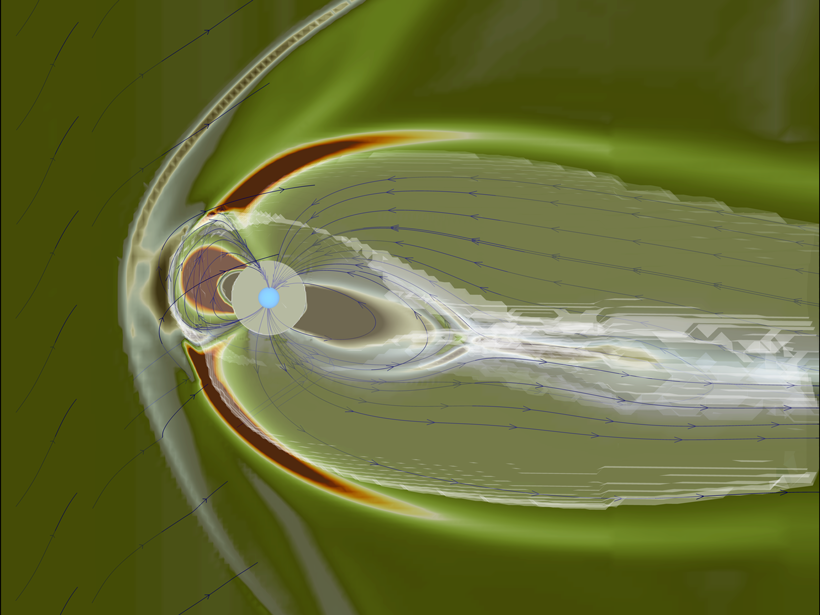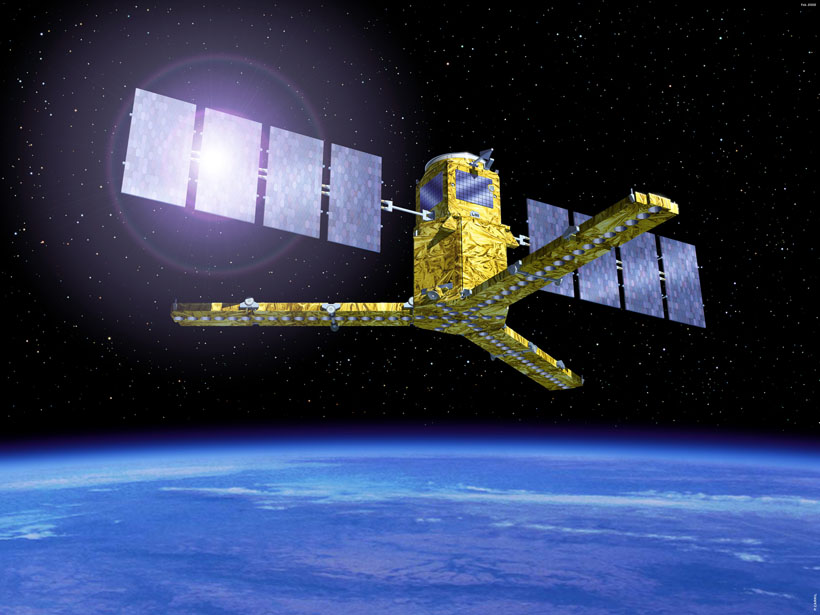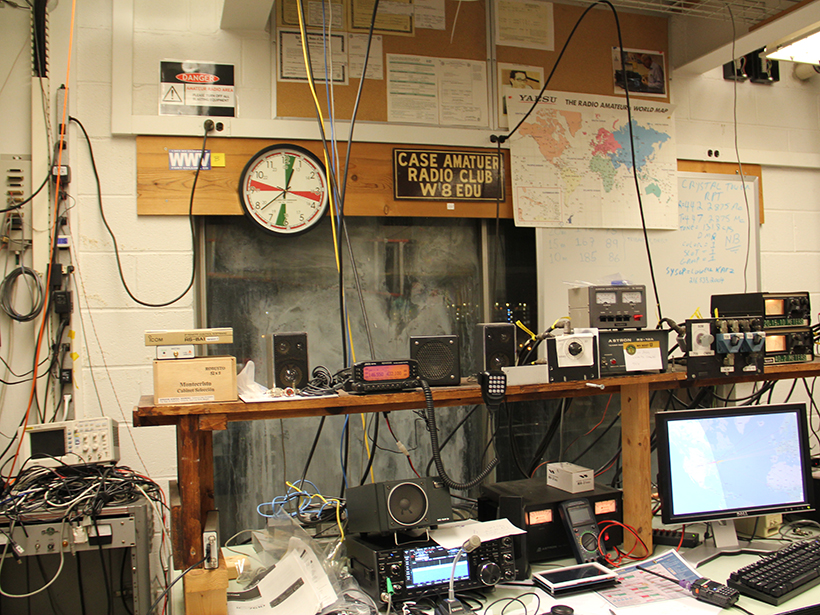Enhanced E-region ionization produced by the aurora can be used to reflect signals from over-the-horizon radars and thus enable those radars to better monitor aviation in Arctic regions.
space weather (hazard)
A Step Toward Making GPS More Resilient to Space Weather
Researchers have developed a new mathematical model to more accurately capture how irregularities in Earth’s atmosphere interrupt signals from Global Navigation Satellite Systems.
Hidden Atmospheric Particles Sculpt Near-Earth Space Environment
Charged particles escape our atmosphere following Earth’s magnetic field and constitute a main source of matter that modulates Sun-Earth interactions.
Filling the Gaps in the SuperDARN Archive
Researchers present a new pattern-finding technique to better estimate missing data on ionospheric plasma velocities.
Looking Down to See Upwards
Hydrological observations of cosmic ray neutrons scattered by water in soil can also provide information on space weather events such as Forbush decreases and ground level enhancements.
Tamas I. Gombosi Receives 2020 John Adam Fleming Medal
Tamas I. Gombosi was awarded the 2020 John Adam Fleming Medal at the virtual AGU Fall Meeting in December. The medal is for “original research and technical leadership in geomagnetism, atmospheric electricity, aeronomy, space physics, and/or related sciences.”
Using Cell Phones as Space Weather Vanes
Tiny magnetometers have turned your phone into a compass, and new research shows they are sensitive to geomagnetic storms.
The Space Weather Modeling Framework Goes Open Access
A versatile suite of computational models, already used to forecast magnetic storms and potential power grid and telecommunications disruptions, is preparing to welcome a larger group of users.
Observing the Sun via Soil Moisture Measurements
Solar radio bursts are background noise for satellite-based radio observations that monitor soil moisture, so, with appropriate processing, those observations can provide data on radio bursts.
Ham Radio Forms a Planet-Sized Space Weather Sensor Network
For researchers who monitor the effects of solar activity on Earth’s atmosphere, telecommunications, and electrical utilities, amateur radio signals a golden age of crowdsourced science.



